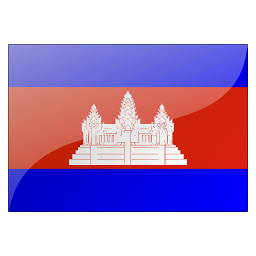



Sleepy Koh Kong (ក្រុងកោះកុង) was once Cambodia's Wild West with its isolated frontier economy dominated by smuggling and gambling. Although remnants of its less-salubrious past still cling on, today this low-slung town is striding towards respectability as ecotourists, aiming to explore the Cardamom Mountains and coastline, bring in alternative sources of revenue.

Kampot Province (ខេត្តកំពត) has emerged as one of Cambodia’s most alluring destinations thanks to a hard-to-beat combination of easy-going seaside towns and lush countryside riddled with honeycombed limestone caves.

Founded as a seaside retreat by French colonizers in 1908 and a favoured haunt of Cambodian high-rollers during the 1960s, sleepy Kep (កែប, Krong Kep, also spelled Kaeb) is drawing tourists back with seafood, sunsets and hikes in butterfly-filled Kep National Park. Its impressive range of boutique hotels squarely targets a more cultured beach crowd than the party-happy guesthouses of Sihanoukville and the islands.

The traveller's first glimpse of Angkor Wat, the ultimate expression of Khmer genius, is matched by only a few select spots on earth. Built by Suryavarman II (r 1112–52) and surrounded by a vast moat, the temple is one of the most inspired monuments ever conceived by the human mind.

Mondulkiri Province (ខេត្តមណ្ឌលគិរី), the original wild east, is a world apart from the lowlands with not a rice paddy or palm tree in sight.

Kambodja kräver att alla resenärer deponerar 3 000 dollar vid inresa till landet. Pengarna kan du bli av med om någon på ditt plan visar sig ha varit smittad.

Gateway for the temples of Angkor, Siem Reap (see-em ree-ep; សៀមរាប) was always destined for great things. Visitors come here to see the temples, of course, but there is plenty to do in and around the city when you're templed out. Siem Reap has reinvented itself as the epicentre of chic Cambodia, with everything from backpacker party pads to hip hotels, world-class wining and dining across a range of cuisines, sumptuous spas, great shopping, local tours to suit both foodies and adventurers, and a creative cultural scene that includes Cambodia's leading contemporary circus.

Welcome to heaven on earth. Angkor (ប្រាសាទអង្គរ) is the earthly representation of Mt Meru, the Mt Olympus of the Hindu faith and the abode of ancient gods. The temples are the perfect fusion of creative ambition and spiritual devotion. The Cambodian ‘god-kings’ of old each strove to better their ancestors in size, scale and symmetry, culminating in the world’s largest religious building, Angkor Wat.

Koh Rong (កោះរ៉ុង) was once little more than a jungle-clad wilderness rimmed by swaths of sugary-white sand, with a few beach-hut resorts speckling the shore around tiny Koh Tuch village. Today the Koh Tuch village street-strip that leads out from the pier is a bottleneck of back-to-back backpacker crash pads, restaurants and hole-in-the-wall bars blasting competing music. You'll either love it or hate it, but for young travellers who descend off the ferry in droves, Koh Rong (particularly Koh Tuch Beach) is a vital stop on any Southeast Asia party itinerary.

Cambodia's southern islands are the tropical Shangri-La many travellers have been seeking – as yet untouched by the mega-resorts that have sprouted across southern Thailand. Many of the islands have been tagged for major development by well-connected foreign investors, but the big boys have been slow to press go, paving the way for DIY development to move in with rustic bungalow resorts.